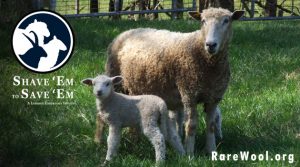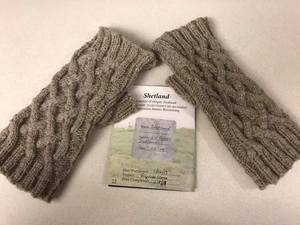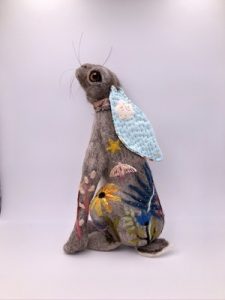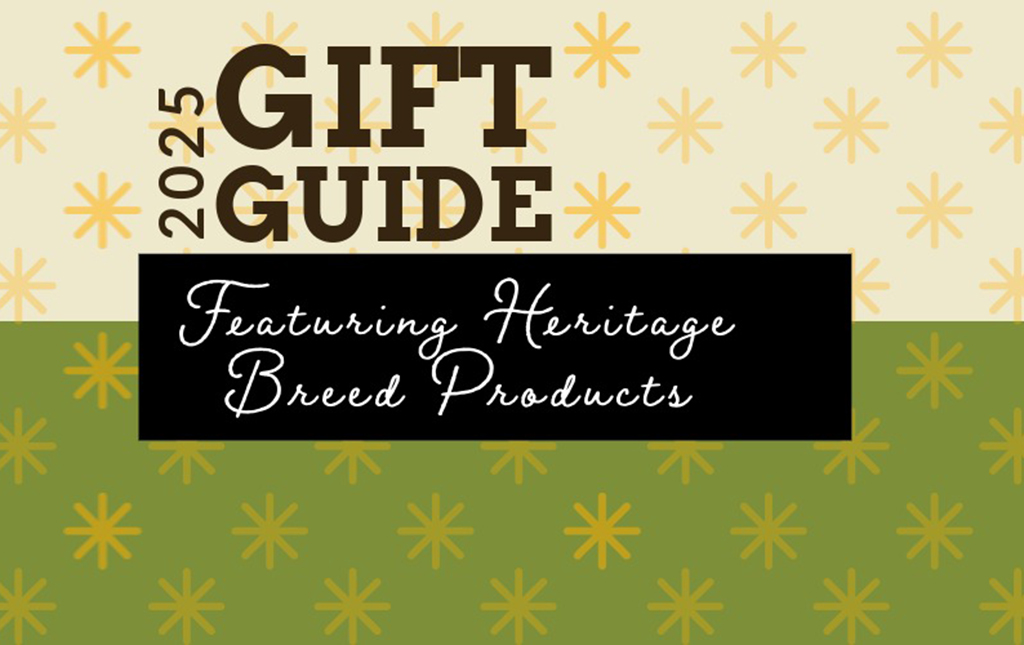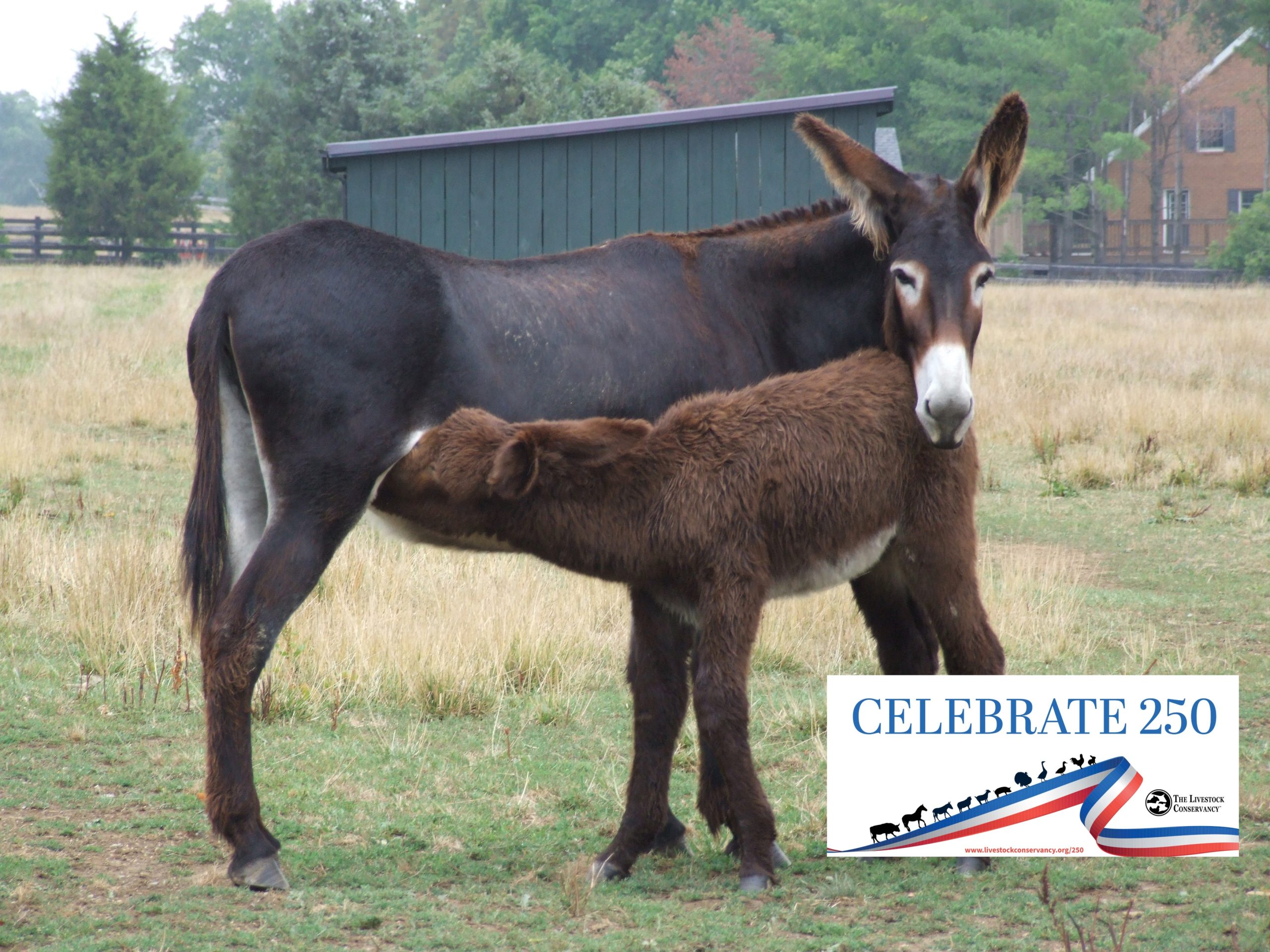Pittsboro, NC, USA [February 18, 2020] – One of the best ways to save critically endangered livestock and poultry is to create a market for their products. Increasing awareness and demand for products made from heritage breed animals makes conservation economically viable for the farmers who raise them. Launched in February 2019, The Livestock Conservancy’s Shave ‘Em to Save ‘Em Initiative continues to dramatically impact the financial success of rare breed shepherds by putting sheep back to work on the farm.
“I farm in an economically depressed market, which makes marketing my fiber particularly challenging,” said Charis Walker, a Shave ‘Em to Save ‘Em fiber provider who raises Tunis sheep. “Shave ‘Em to Save ‘Em allowed me to sell all of my roving, yarn and fleeces within two weeks of listing it on Etsy. When I started my flock, I was concerned about how I would sell my fiber. This program has exceeded my expectations and allows me to more effectively promote the breed to my guild members, my local community, and the fiber community at large. The impact can be measured in my sales and traffic to my Etsy site and website. My ability to grow my flock larger than my original intention is tied in large part to the interest in my fiber and breeding stock, which I credit to Shave ‘Em to Save ‘Em.”
Like Walker, many of the more than 900 Shave ‘Em to Save ‘Em fiber providers are seeing an uptick in their sales for the past 2 years. A recent survey of those fiber providers indicated that 37% of shepherds had sold 50 to 200% more wool than before joining the initiative. Driving the demand for rare breed wool are the more than 2,100 fiber artists working to fill their Shave ‘Em to Save ‘Em passports with stickers for projects completed using the wool or hair from 23 rare breeds of sheep.
“I was so excited to sign up for Shave ‘Em to Save ‘Em just to get connected with folks raising rare breeds and other yarnies,” said Michelle Holtkamp, the 2000th fiber artist to sign up for the initiative. “Here’s to many thousands more makers getting to connect with farmers and fiber folk. I love the work this program is doing.”
A three-year program, the Shave ‘Em to Save ‘Em Initiative aims to connect everyone passionate about fiber from rare sheep breeds, from those raising the sheep to those buying and creating the products. Fiber artists buy at least 4 ounces of wool or wool products like roving, yarn or felt, from providers who raise sheep breeds listed on The Livestock Conservancy’s Conservation Priority List. Fiber providers send artists a sticker with their product to collect in their Shave ‘Em to Save ‘Em Passports. The more stickers and projects artists complete, the more prizes they earn and the more wool a provider can sell. Through online communities like Facebook and Ravelry artists connect with each other, share photos of their projects, receive advice and get to know the shepherds stewarding the rare sheep.
Before joining the Shave ‘Em to Save ‘Em Initiative, some fiber providers composted their fleeces because there was no demand for them from consumers. Now they can sell directly to fiber artists and connect with each other through social media. In addition to fostering creativity and community, the program also educates shepherds about preparing their wool for sale and how to reach customers and fiber artists, making it more profitable to raise heritage breed sheep. A win-win for everyone involved.
Sponsors and supporters of the initiative, like Standlee Premium Western Forage and the Noah Foundation, make it possible for The Livestock Conservancy to continue building a robust fiber market through education and community.
“The work that Shave ‘Em to Save ‘Em does to bring heritage sheep producers together with fiber artists is critical for the survival of rare sheep breeds,” said Laura Marie Kramer, director of national accounts at Standlee Premium Western Forage. “At Standlee, we recognize the importance of connecting people’s passions. Our company’s passion is growing forage. We grow our forage knowing that our customers devote their lives to the animals that they love. We see the value that The Livestock Conservancy provides farmers and shepherds to promote and market the breeds of animals they love and are extremely passionate about raising. The Shave ‘Em to Save ‘Em Initiative has helped shepherds connect with fiber artists that have a passion for creating art from wool. These are three very different passions rooted in agriculture, which all connect together. Growing the forage to feed the flocks which grow the fiber for the artist to create with.”
This year’s new educational opportunities include wool profiles for each of the rare breeds of sheep on The Livestock Conservancy’s Conservation Priority List. A 2020 Craft Futures Fund grant from the Center for Craft will support fiber author and Livestock Conservancy Member Deb Robson as she compiles 23 easy-to-use profiles detailing the wool characteristics for each breed and the projects each wool would be best used to create. The new profiles will be available on The Livestock Conservancy website and for Shave ‘Em to Save ‘Em Artists and Fiber Providers.
To continue engaging fiber artists who may have already completed several projects in their passports, The Livestock Conservancy invited their online community to knit socks in two weeks as part of a Socking Up for Winter Facebook Challenge. Nearly 100 participants accepted the challenge and learned to knit socks through educational Facebook Live videos, a group forum, and provided patterns. The group shared photos of their ongoing challenge project and encouraged each other to keep going when someone posted questions or difficulties as a beginner. The sock challenge was so successful, The Livestock Conservancy is planning a mitten challenge in March and other projects throughout the year. Challenge materials will be compiled into a Teachable course after each challenge so new fiber artists can participate later.
“I am so thankful for the Socking Up for Winter Challenge,” said fiber artist Asha Brogan, who joined the Shave ‘Em to Save ‘Em Initiative to participate in the challenge. “I only thought socks could be successfully knit with 20% nylon and learning about yarns that are more felt resistant and better on the foot was a revelation. As an avid sock knitter, I can’t wait to try other Shave ‘Em to Save ‘em breeds.”
The Shave ‘Em to Save ‘Em Initiative continues through February 2022. For more information about how to become a fiber artist or fiber provider for the Shave ‘Em to Save ‘Em Initiative, visit
rarewool.org.
Shave ‘Em to Save ‘Em Initiative sponsors include Baize Shetlands, Fiber Goods Pals, JG Switzer, Living Felt, Marushka Farms, Ply Magazine, Premier 1, Richert Ranch, Solitude Wool, Standlee Premium Western Forage, Storey Publishing, and Unicorn Clean. To become a sponsor of the initiative, email info@livestockconservancy.org.
###
Photo credits: All photos are courtesy of Shave ‘Em to Save ‘Em Initiative Fiber Artists and Providers.
###
Why is genetic diversity important?
Like all ecological systems, agriculture depends on genetic diversity to adapt to an ever-changing environment. Genetic diversity in domestic animals is revealed in distinct breeds, each with different characteristics and uses.
Traditional, historic breeds retain essential attributes for survival and self-sufficiency – fertility, foraging ability, longevity, maternal instincts and resistance to disease and parasites. As agriculture changes, this genetic diversity may be needed for a broad range of uses and opportunities. Once lost, genetic diversity is gone forever.
What Are Heritage Breeds?
Heritage breeds are traditional livestock breeds that were raised by our forefathers. These are the breeds of a bygone era, before industrial agriculture became a mainstream practice. These breeds were carefully selected and bred over time to develop traits that made them well-adapted to the local environment and they thrived under farming practices and cultural conditions that are very different from those found in modern agriculture.
Heritage animals once roamed America’s pastoral landscape, but today these breeds are in danger of extinction. Modern agriculture has changed, causing many of these breeds to fall out of favor. Heritage breeds store a wealth of genetic resources that are important for our future and the future of our agricultural food system.

